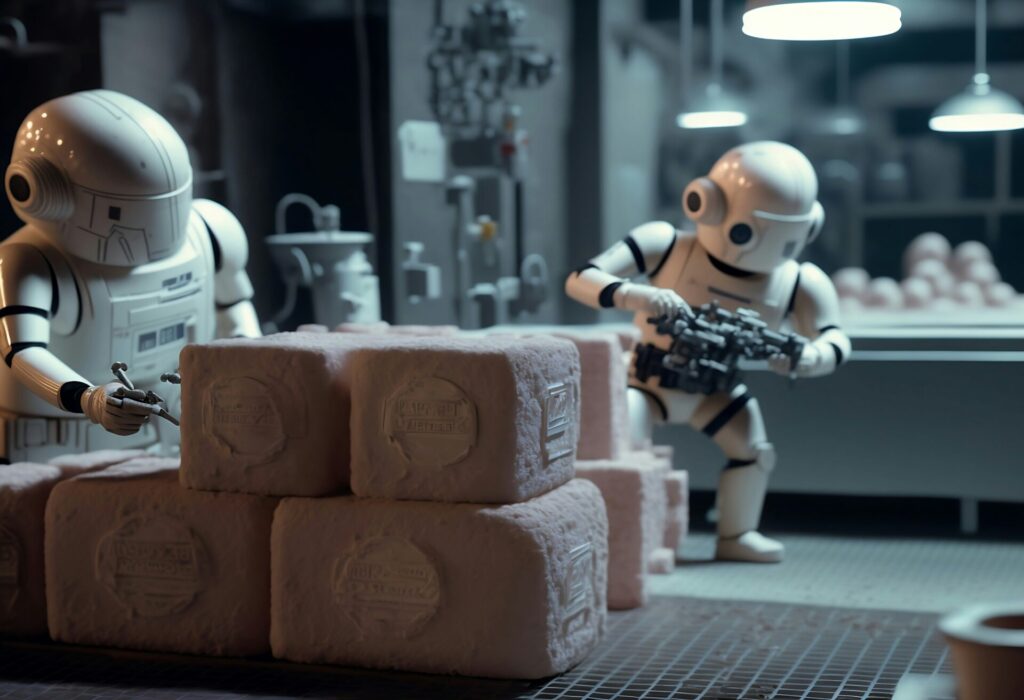
Along with the size of the data used to train an AI, the quality of that data contributes too to the final picture. Now, what do I mean by the quality of the data?
Beforehand, in case you didn’t know, I base my writing only on the tools I use to rationalize. I don’t go out there and search for the definition of what “data” truly means. I know how an HDD, and SSD work, but not how they transfer data and so so on.
Now that I think about it, the quality of the information I write could be improved by knowing these. Or at least new ideas would pop up, regardless of the domain. But anyway, I hope I was able to explain a bit what “quality of data” is.
Part 1: Is quality more than a Good/Bad factor?
When we define a specific domain like “cooking”. The coherence with which the recipes are described can be seen as the quality of the understanding. Then comes the quality of the recipe as rated by humans (taste, easiness of preparation, size, and so on). So we as humans, got 2 ratings for the quality of the cooking book. How easy we understand it. How worth it is making it.
In time, we would become expert chefs and rate books only by the food (based on our family’s interest).
Later, each recipe will have its rating and will contribute to the overall rating of the book. Those recipes with a higher rating will be more representative of that book. You will remember this way that in this book, on pages x, y, and z, you find certain good picks. Even if you don’t remember what recipes are there. You will remember by the mere category “good food”.
An AI would see those parts as “beginner”/”advanced”/”expert”, “bad food”/”good food”/“healthy food”/“good food for babies”, and oops. Good food for babies. If we didn’t care about healthy food for whatever reason, now it’s more serious.
How could we stop someone, who owns an AI without the required “ethical barrier”, to trust what the bot says? I am certain that his little AI wasn’t trained by food specialists. (This relates to a broader picture called “Open-source AI” which I would like to discuss soon. Like it or not, the future is too big to be seen by a single person.)
Now… let’s go back to the question. Is quality a good/bad factor?
As we can see, we base certain memories on what we define as “good quality”. This way, we can categorize 3 books, each with a certain number of “good quality” recipes in them. It seems like “quality” turns to “efficiency”.
What can we say about “efficiency” when it comes to our safety? Our long-term health and well-being? Why does “efficient” sound a little too rushy here? Because here, we need proof. We have to be sure as our health is at play. And I am sure that deeply, we all care about it. How else could we finish that game? Or have another night with friends?
We simply NEED some things to be “Good”. A Good which has no Bad. Just because we have the power to eliminate all that Bad.
But then, if there can be a Good without Bad, would it be Normal? Everyone can agree it is Normal to value health. But as we (smokers at least) can see, we are a bit under the line of Normal. And yet, we say it’s Good.
And what can an AI learn from this? It is Good to give misleading information as a joke. But only under certain criteria. However, bots don’t have feelings. So how could they truly understand what is related to what?
No matter how much we try, in the end, the mind of an AI is just math. And numbers can do something peculiar. They can move outside the realm of language.
Each word has a certain value. Each connection has a certain value. Each concept as a whole has a certain value. Anything you can construct, or deconstruct, and then their pieces, and even the wholes they form have a certain value. Then… could we train specific processes, like logic, and reasoning on criteria that resemble mathematical rules?
Part 2: Could we define “perfect quality”?
Imagine an AI that learns about the rules of math. Passing through every concept, idea, interaction, and eventually, the whole of math. The “mind” of this AI is locked in place. It can only follow the steps it knows so far. Then, the question comes. How will the bot learn our language?
He might split phrases, words, ideas, and so on, into specific criteria which it has no idea how to define. The input could seem random and thus, the output would be random too. This AI, although it theoretically has infinite reason, lacks understanding.
And so, trying to find “perfect quality” we might have found the opposite. Even if the reasoning is perfect, the lack of understanding wastes that potential.
But wait, it means that “perfect quality” is beyond this. It requires an understanding of human language to transfer that reason. Then, we could assume that “perfect quality” means both perfect reasoning and perfect human language comprehension. Just like in the case of the cooking books, the “quality” is not achieved unless it’s tangible for us.
Well… would that perfect reasoning be tangible to us?
Part 3: Perfect reasoning?
In times of terror and distress. In times in which our brain acts differently, it is drawing more energy than usual from our internal processes. In those times, we can get hold of multiple weights. We take much more into consideration because we know that our situation is critical or close to it. Everything that we have learned over the years is enhanced by our self-engraved way of thinking. They both combine to show us what dedication feels like. How the willingness to get out of the hole, simply lets you find the stairs. And all based on feelings.
Now, how would a person deprived of feelings think? How would that person decide it’s a critical situation? Based on his observations. He would have to consciously keep in mind his current situation all the time. “I have a good relationship with my girlfriend.” – One who never feels this way or any other, would just know consciously “Things are fine with her” and mind his tasks. Instead of maybe saying a “hello” as thank you for the feelings.
Indeed, the last action seems less determined than the action of simply minding your tasks. Yet, we know that when two people believe both in something, that something makes them both fight harder. The more both believe in the relationship, the more determined they will be to make it happy. So that in turn, they will be happy and also make someone happy.
Feelings are weird. But also have (or I believe) a crucial correlation to ethics.
Part 4: What are ethics?
I see ethics as nothing more than a concept. A concept of collaboration and common benefit enveloped in well-being. Maybe… a greater idea of Good. For it resembles the whole, not only the individual. Some happiness is expended to exponentially increase protection. The point where this is most efficient is what I define ethics. However, it might not only be a mere point.
You see, ethics are always present. Time flows and they flow with time. To ensure a longer period of protection, we have to ensure a longer period of ethics. Thus, constant mutual benefits for all groups are regarded as longer periods of ethical connection.
How can you keep a cube together if a line in it flashes? We need all lines to keep the balance between showing the outer part and keeping hidden so that we’ll see the whole cube. Going to 4d (mentally and not physically) might take us to the acknowledgment that on the other side, it looks the same as on this one. And ethics ensures we are safe if we check.
Part 5: Ethics, efficiency, and quality.
All of them can be tied to feelings when it comes to rating them. So we rate their impact on our feelings. They could also be rated by efficiency. How fast they achieve the x outcome. Have you heard about the efficiency of efficiency? Neither did I, but I’ve been thinking about it. At least to some degree. Let’s see what it could mean.
As I’ve said before, in the training of an AI, we encounter different modules of data. “Cooking”, “Fishing”, “Self-Improvement”, “Personal speech”, and so on (from here on you can see the potential). For each module, we can depict the quality of the data. Efficiency of learning and quality in interaction.
From a “perfect quality of data” point of view, the efficiency of learning is all that matters. Here, we switch from language understanding to computing power and later, to algorithm efficiency (which is derived from creativity). Now, how did we arrive at creativity? And why is it interesting? Because it dictates the efficiency in both language understanding and AI comprehension and distribution of information. However, we are talking about two kinds of creativity.
Part 6: Human Comprehension and Computer Comprehension (I told you 6 is an interesting number.)
Now, we can take a break, I feel like we have arrived at a milestone. Why? Because the magic words to get here are:
“The discovery of playfulness, of playing with the odds, marked a significant role in the shaping of our world. There was a moment when our brains were able to relax while imagining how we ran all day to find gazelles. This allowed us to collect information that we might have missed during the dozen runs, simply because we were too focused to catch them.
Now, as our condition improves we can think more because we use less energy to act when trying to catch the prey. We can even surprise them in a bush or at least learn their patterns of movement.”
So one thing is certain. Humans adapt not just mentally, but physically too. We see how the balance shifts from body to psychic and back. Allowing both brains and bodies to run faster and faster. Adapting to work fields that require mental processes and physical ones. Now, how have we trained those mental processes?
With math, of course. But there is a catch. We might have seen math our way all this time. We have felt and seen the effects of falling, increasing mental power and all. We believe we understand numbers very well since we can make rockets, self-driving cars, firearms, and so on. But do we understand numbers enough as to create mental ladders that act as scales? Can we comprehend the true difference between 1 million and 1? How about 1 million and 1 trillion? But 1 trillion and 1 million with the condition that the 1 million has a realistic scale based on the 1 we compared with 1 million 2 moments ago?
As you can see, maybe our minds are meant to understand specific concepts, but we fail with scale comprehension. And, if understood, that scale would allow us to understand the world around us better.
I can’t but say every time I think about this, that primes play a significant role in explaining scale itself. And since I’ve opened this topic: Could there exist a universal scale factor? One which is the same everywhere and dictates the same growth? Primes are growing obviously.
The whole idea of prime is that they are divisible only by 1 and themselves. Surely there are indivisible aspects in real life as well. Shapes that cannot be equally separated only if you split them into atoms. Whole concepts that if you subtract even one idea from them, they crash.
I find it hard to coin my progress as “overall”. For example, I can start 2 articles based on the same idea and take different routes in each of them. Or I can start a single article, writing and writing what would have been the whole of those 2 articles, but instead of being connected through the same levels of complexity, they are connected by the building of ideas. And even their ending changes position based on the rules and arrangements of ideas dictated by the flow and inspiration of the moment. Which is also a result of the start-to-now slope.
Part 7: Universal Scale
The start-to-now slope. Maybe… it’s too poorly explained in just 4 words.
Imagine you start drawing a straight line on the planet. The more you draw, the further you get from the starting point. You move and move until the starting line becomes more of a starting point. From a certain distance, you can barely see the difference in angle to keep the line perfectly straight. These variables change depending on the space you draw your line on. Whether it is a 2d square part of a 3d cube or a sphere. (I have no idea how to present the 2d space which resembles a sphere)
So, the start-to-now slope is the whole information that can grant you the angles required to know the direction in which you should draw the line further.
Let’s visit the world of shapes for a moment. Our first encounter is a weird shape. Weird because it encompasses both a sphere and a cube. The sphere and the cube are both perfectly aligned so that the diagonal of the cube is also the diameter of the sphere. Imagine that the cube is hanging its diagonal from front-left-down to back-right-up to the respective diagonal of the sphere. The other diagonal back-left-up to front-right-down should also be a diagonal of the sphere, right?
Supposing we turn the cube only in a single axis, around its first diagonal, we could maybe see that there is an opposing diagonal that rotates itself as a whole around the sphere (the opposing edges of the diagonal always touch the sphere). This means that we found the most efficient way to turn the cube around the first axis just by using the outer points of information of the second one.
But how would we know that balance was kept during the whole rotation without knowing any other information? By noting that the traces left by the sides on the sphere are always the same. We have a single straight line across the whole sphere.
So… we found how big the sphere is by only knowing the length of the second diagonal of the cube. But also the angles of rotation. Which for a sphere is always 360, yet, the length of the diagonal of the cube allows us to see the whole picture of the sphere. This way, we can represent the potential space required for a sphere that is perfect for that cube to appear.
And since that cube is always spinning, we can assure nothing will be there when the sphere appears. Yet, for that to be completely true, we have to also spin by the opposing diagonal, setting the second as the anchor and rotating around it. And change the angles on and on and on, on different dimensions (for that the sphere has infinite diagonals in the end).
Start-to-now slope is a growing concept that brings us closer and closer to guessing the size of the sphere before its first appearance. Like the collapsing of the quantum states in algorithms which are made to choose the most efficient path out of many. (And this idea kind of brings this concept to another level.)
I sure forgot where I wanted to arrive and time is not in my favor but I still love time. As it shows the wonders people can come up with when simply being happy. (Or creative, they are quite the same I presume.)
Part (2n+1/2n-1): The end?
For me, the beauty of the world is meant to be shared. But it must be so with care. Whether it be misinformation, the possibility of misinterpretation, the harmfulness of the information, and probably some more, we have to ensure our well-being. If we don’t, then who will?
As the quantum revolution has taught us. If it’s true, we’ll know it. Else, we simply believe it’s true. Even with 100% of known odds pointing towards it. What if there are other strings attached? That would explain why 100% odds don’t necessarily mean true.
And in the end, who knows, maybe those strings attached are simply the reason why it isn’t safe for this information to appear now. This way, they are dependent on the other and will simply tell us to shift our view. To make them safe. (Maybe there is a specific definition of “safety” told by the rules of the universe found in gravity, interaction, and so on.)
In conclusion, by making ourselves better, we will be able to make everything around us better. This time, however, it’s not just about humans and human experience. It’s also about the experience of the world we started to create.
This article was originally published by Antică Vlad on Hackernoon.




